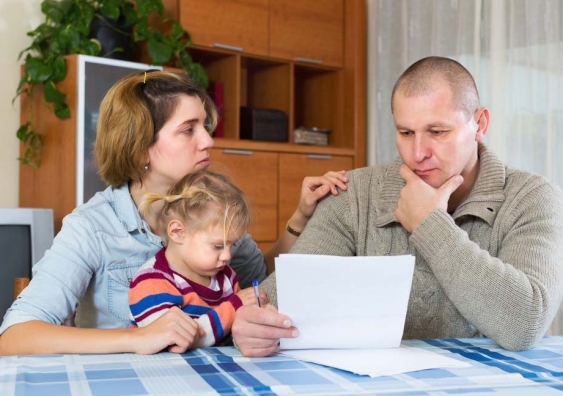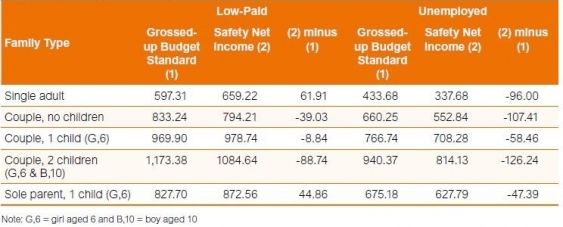How the low-paid and unemployed lack an adequate income for a healthy life
The Newstart Allowance received by people looking for work falls well below the minimum income required to achieve a basic standard of living, UNSW research has found.
The Newstart Allowance received by people looking for work falls well below the minimum income required to achieve a basic standard of living, UNSW research has found.

Clare Morgan
UNSW Media & Content
(02) 9385 8920
clare.morgan@unsw.edu.au
The Newstart Allowance received by people looking for work falls well below the minimum income required to achieve a basic standard of living – defined as a budget standard – according to a new report by researchers from UNSW Sydney.
The New Budget Standards for Low-Paid and Unemployed Australians Report, compiled by UNSW’s Social Policy Research Centre (SPRC) with support from Catholic Social Services Australia (CSSA), the Australian Council of Social Service (ACOSS) and United Voice, found that the Newstart Allowance is below the identified budget standard by $96 a week for a single person, $58 a week for a couple with one child and $126 a week for a couple with two children.
A budget standard measures the basic costs to achieve a minimally adequate standard of living – a level below which no-one should be allowed to fall, the report authors say.
The standard of living underpinning the new budgets is the Minimum Income for Healthy Living (MIHL) standard, which is higher than the poverty line (50% of median income) and is designed to ensure that in addition to material consumption, it allows for a healthy level of social participation.
“The quality of people’s lives cannot be completely represented by the goods they consume and it is important to ensure that the budgets also allow for a degree of social participation that is consistent with healthy living and social inclusion,” said Chief Investigator Professor Peter Saunders, a global expert on social policy from the SPRC at UNSW.
The report shows that for individuals, single parents and couples with and without children who are reliant on income support, Australia’s social safety net is shockingly inadequate, falling short of what’s required for the most basic standard of living by between $47 and $126 a week.

Comparisons between the Grossed-up Budget Standards Estimates and Existing Safety Net Incomes ($ per week, June 2016). Source: New Budget Standards for Low-Paid and Unemployed Australians Report
Professor Saunders said the findings suggest a change is needed in how Newstart levels are determined.
“Newstart levels are currently set at the discretion of the government. But the evidence presented in this study suggests that a mechanism similar to the minimum wage, which is set independently, would ensure that income floors are maintained at an adequate level as circumstances change,” he said.
Fr Frank Brennan, CEO of CSSA, said the organisation had been advocating since the last federal election for the establishment of an independent commission to advise government on the appropriate level of welfare payments to ensure people can have access to basic requirements.
“A safety net that doesn’t provide enough income for a family to have even a minimum adequate standard of living, is no safety net at all,” Fr Brennan said.
“Low household income is a central factor in shaping individual and family life opportunities. How can people be expected to present at job interviews or take part in educational opportunities to increase their chances of securing employment, when they are forced to continually focus on how they will keep a roof over their heads and have enough money to eat?”
Dr Cassandra Goldie, CEO of ACOSS, said people on low incomes were living in emergency conditions.
It is vital that government immediately increase Newstart to help alleviate the dire levels of poverty we’re seeing as a result of our failure to increase the basic rate of working-age social security payments in more than 20 years.
“Single people receiving social security are struggling to live on incomes nearly $100 a week below the budget standard. For a couple with children it’s $126 a week below. Such low rates of payments deny a family and their children the most basic standard of living we expect for each other as human beings,” Dr Goldie said.
“It is vital that government immediately increase Newstart to help alleviate the dire levels of poverty we’re seeing as a result of our failure to increase the basic rate of working-age social security payments in more than 20 years.”
The report found that the largest single cost to family budgets is housing, and in all family types it exceeds the 30% benchmark that identifies families facing housing stress. Other than housing, the largest areas of the family budget are food, household goods and services and transport.
Noting the variation in housing costs depending on where people live, Professor Saunders and report co-author Megan Bedford also raise questions about whether a single, standardised national safety net is meaningful, suggesting a safety net that better reflects these variations could deliver more equitable outcomes.
The full report is available here.